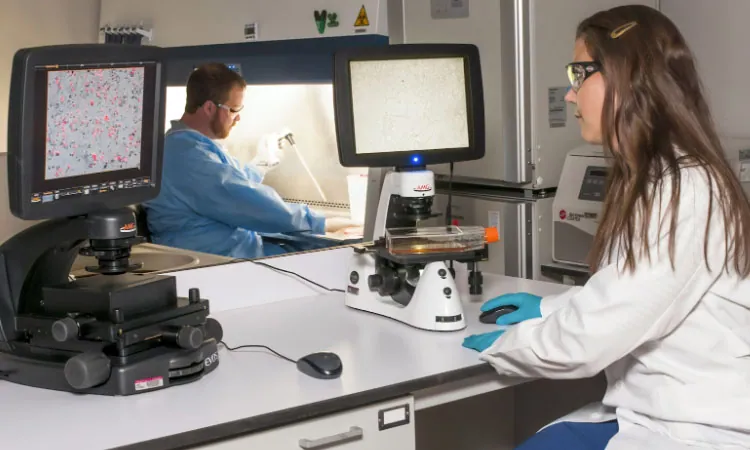In the constantly changing field of medical labs, being precise and dependable is crucial. Making sure lab activities follow rules isn’t just a must by law but is also vital for keeping patients safe and earning the public’s confidence.
Just last year, the Department of Health and Human Services (HHS) Office for Civil Rights closed 13 cases with healthcare groups for possible HIPAA breaches, underlining how crucial it is to stick to the rules in healthcare environments.
In this post, we’ll explore the ins and outs of adhering to rules in medical labs, looking into why compliance matters and grasping what the regulations demand.
Understanding Regulatory Standards
Leading the charge in upholding standards for medical labs are regulatory organizations like the Food and Drug Administration (FDA), the Clinical Laboratory Improvement Amendments (CLIA), and the International Organization for Standardization (ISO).
These bodies set forth rules and standards overseeing different facets of lab activities, guaranteeing that testing procedures adhere to strict quality and safety criteria. One of the recent breakthroughs aiding in compliance endeavors is the single-cell sorter, an advanced technology transforming cell analysis by improving accuracy and productivity.
The cell sorter makes it easy to separate and study individual cells with amazing precision. This helps scientists learn more about how cells work and what causes diseases. With its simplified cell analysis, this groundbreaking tool doesn’t just make labs run smoother but also pushes medical research and diagnostics forward.
Compliance Requirements for Medical Laboratories
Understanding and following all the rules can be hard for lab workers. Everything, from the qualifications of the staff to how the lab is set up and how well it’s run, needs to be right. Keeping good records is important too, so inspectors can see you’re following the standards.
If labs put strong standards in place and make sure everyone follows them, they can meet the goals and do their jobs better. Following the rules isn’t just about staying legal, it’s about doing the best for patients and making healthcare better for everyone.
Implementing Compliance Measures
Efficiently embedding compliance protocols into lab operations demands a methodical strategy. Staff must undergo thorough training and continuous learning to grasp regulatory mandates and nurture a compliant atmosphere in the lab. Harnessing technology, such as cutting-edge software tools, can simplify compliance tasks and enhance precision in lab tests, leading to better patient care.
Maintaining Compliance: Best Practices
Keeping up with changing regulatory requirements is crucial for labs aiming to stay compliant. Conducting routine internal audits helps to spot and fix compliance issues early on, preventing them from becoming bigger problems.
Working with regulatory consultants or experts can offer valuable advice on dealing with complex compliance issues, helping labs stay dedicated to following regulations.
Consequences of Non-Compliance
Not living up to the required regulations in medical labs brings serious troubles. Paying big amounts in penalties, dealing with court issues, and losing the good name of the lab are some of the direct outcomes of not keeping up with the standards.
But it’s not just about the money, this situation also hits the core functioning of the lab and shakes the confidence that patients and those invested have in it. It’s a clear signal that following the rules should be a top priority to avoid making choices that could lower the standards and dependability of the lab’s testing methods.
Championing Continuous Improvement
When it comes to meeting regulatory requirements, medical labs need to adopt a mindset of always improving. It’s not just about meeting the bare minimum; labs should aim for greatness in everything they do. This means regularly checking how things are done, finding ways to make them better, and then making those improvements happen.
By encouraging an attitude of coming up with new ideas and being able to change as needed, labs can keep up with what regulations demand and deal with new problems before they become big issues. In the end, this leads to better quality and more effective services, all while following the rules.
Fostering Collaboration Across Disciplines
To meet the regulatory standards in medical labs, it’s crucial for various experts to work together. This includes lab technicians, quality assurance experts, regulatory affairs staff, and senior managers. Each person has a key role in making sure the lab meets these standards.
When these different teams communicate openly and work together, they can use their combined knowledge to tackle tricky compliance problems, make processes smoother, and put the best methods into action. When everyone is committed to doing their best and following the rules, it strengthens how the lab operates, making everything better and promoting a culture where everyone is responsible and honest.
Final Thoughts
Following regulatory guidelines isn’t just a formality; it’s a crucial necessity for medical labs. By sticking to these standards, labs maintain top-notch accuracy, safety, and dependability in their tests, which in turn protects patient well-being and upholds public confidence. With a strong dedication to following the rules, labs can confidently navigate the intricate regulatory terrain, securing their ongoing prosperity in the constantly changing healthcare environment.

